 |
Exploring Developmental Needs and Characteristics (Collection) |
2.00 |
Certain developmental needs and traits are associated with younger school-age children, while others are typical of older school-age children and youth. While the differences between school-age children of different ages are not clear-cut, there are some general traits and tasks that are often associated with younger (ages 5 – 7), middle (ages 8 – 10), and older (ages 11 – 12) school-age children and youth. Understanding these differences helps staff plan appropriate activities and guidance strategies for children of different ages. |
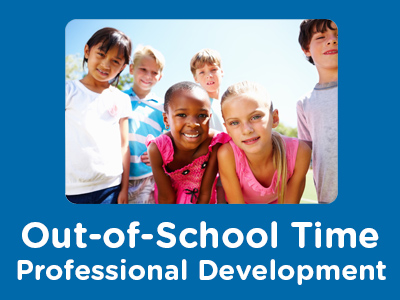 |
Exploring Developmental Needs and Characteristics: Age Group 11 to 12 |
0.67 |
Certain developmental needs and traits are associated with younger school-age children, while others are typical of older school-age children and youth. While the differences between school-age children of different ages are not clear-cut, there are some general traits and tasks that are often associated with younger (ages 5-7), middle (ages 8-10), and older (ages 11-12) school-age children and youth. In this course, we will explore the needs and characters of children ages 11 to 12, to help staff plan appropriate activities and guidance strategies. |
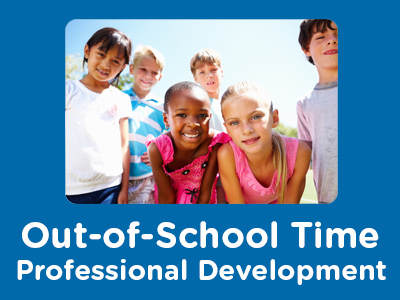 |
Exploring Developmental Needs and Characteristics: Age Group 5 to 7 |
0.67 |
Certain developmental needs and traits are associated with younger school-age children, while others are typical of older school-age children and youth. While the differences between school-age children of different ages are not clear-cut, there are some general traits and tasks that are often associated with younger (ages 5-7), middle (ages 8-10), and older (ages 11-12) school-age children and youth. In this course, we will explore the needs and characters of children ages 5 to 7, to help staff plan appropriate activities and guidance strategies. |
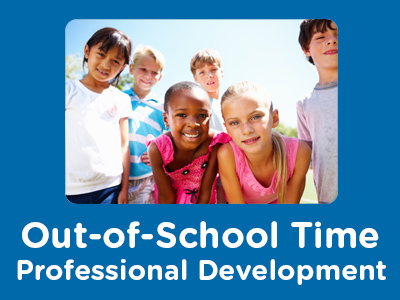 |
Exploring Developmental Needs and Characteristics: Age Group 8 to 10 |
0.67 |
Certain developmental needs and traits are associated with younger school-age children, while others are typical of older school-age children and youth. While the differences between school-age children of different ages are not clear-cut, there are some general traits and tasks that are often associated with younger (ages 5-7), middle (ages 8-10), and older (ages 11-12) school-age children and youth. In this course, we will explore the needs and characters of children ages 8 to 10, to help staff plan appropriate activities and guidance strategies. |
 |
Exploring Developmental Needs and Characteristics: Age Group 13 to 17 for Paraprofessionals |
1.50 |
Certain developmental needs and traits are associated with younger school-age children, while others are typical of older school-age children. While the differences between school-age children of different ages are not clear-cut, there are some general traits and tasks that are often associated with older school-age children. This course delves into the specific traits of students between the ages of 13 and 17. |
 |
Exploring Developmental Needs and Characteristics: Age Group 11 to 12 for Paraprofessionals |
1.00 |
Certain developmental needs and traits are associated with younger school-age children, while others are typical of older school-age children. While the differences between school-age children of different ages are not clear-cut, there are some general traits and tasks that are often associated with younger school-age children. This course delves into the specific traits of students ages 11 and 12. |
 |
Exploring Developmental Needs and Characteristics: Age Group 5 to 7 for Paraprofessionals |
1.00 |
Certain developmental needs and traits are associated with younger school-age children, while others are typical of older school-age children. While the differences between school-age children of different ages are not clear-cut, there are some general traits and tasks that are often associated with younger school-age children. This course delves into the specific traits of students between the ages of 5 and 7. |
 |
Exploring Developmental Needs and Characteristics: Age Group 8 to 10 for Paraprofessionals |
1.00 |
Certain developmental needs and traits are associated with younger school-age children, while others are typical of older school-age children. While the differences between school-age children of different ages are not clear-cut, there are some general traits and tasks that are often associated with younger school-age children. This course delves into the specific traits of students between the ages of 8 and 10. |
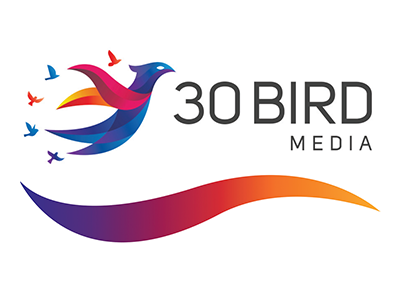 |
CWNP Certified Wireless Specialist - Exam CWS-101 |
8.00 |
Certified Wireless Specialist - Exam CWS-101 covers the fundamentals Wireless Fidelity (Wi-Fi) technologies for wireless communications. The student will learn the basics of how Radio Frequencies (RF) are utilized by Wi-Fi with hardware and software to create wireless local area networks (WLANs). Upon completion of this course, the student will have the knowledge required for the CWS-101 exam and CWS certification.
This vendor neutral course assumes that the student has a basic knowledge of using wireless computing devices and wireless networks. The exam objectives are marked throughout the course, with applicable acronym and objective indexes. |
 |
Adapting to Change |
0.50 |
Change is always happening, whether we realize it or not. Our bodies are constantly generating new cells to replace old ones. Stock prices are rising and falling. In this course, you will discover different strategies for reacting to and dealing with change in life. |
 |
Framing: Child Maltreatment for EMS Providers |
1.00 |
Child Abuse Pediatrician Dr. E. Murray discusses some of the key issues that EMS providers must consider when caring for abused children. Final Exam: This multiple-choice exam is designed to test your knowledge of the material you just reviewed. You have two attempts to gain an 70% or higher on this exam. Please take your time and answer each question carefully. |
 |
Respecting the Child's Perspective (CDA 3 & 4) |
2.00 |
Children and adults see the world very differently, and understanding child development helps you gain valuable insight through a child’s eyes. In this course, you will look at common situations and the ways children and adults may see them, taking into consideration what is developmentally appropriate for the children involved to find solutions that work for the children in care.
This course is also designed to be part of a Child Development Associate (CDA) Credential™ curriculum. It covers CDA Subject Area 3: Supporting Children's Social and Emotional Development, Subject Area 4: Strategies to Establish Productive Relationships with Families.
|
 |
I Am: Supporting Self-Awareness and Self-Management |
2.00 |
Children and youth develop social-emotional skills and character over time and through a variety of experiences.
Expanded Learning Programs strongly support three foundational areas of Social-Emotional Learning and Character Building:
- I AM (Interpersonal Connections)
- I BELONG (Interpersonal Connections)
- I CAN (Belief and Mindset)
This course focuses on the I Am skills.
By the end of this course, you will:
- Understand how young people's responses affect personal emotion and behavior.
- Learn how group agreements can support self-awareness and self-management in children and youth.
- Learn strategies and resources to support I Am skill building with children and youth. |
 |
Understanding Adverse Childhood Experiences (ACEs) (CDA 3) |
2.00 |
Children who are exposed to adverse childhood experiences (ACEs) face an increased risk for social-emotional, physical, and mental health issues. ACEs include abuse, neglect, parental separation or divorce, and other traumatic experiences before the age of eighteen. This course explores the awareness of trauma in young children and families and discusses the role of the early care and education professional in nurturing resilience. This course will help you to better understand ACEs and trauma. |
 |
Course 20: Developing Activities That Encourage Creativity and Cognitive Development |
2.00 |
Children who regularly attend school-age programs need many opportunities to engage in activities that will help them develop their creative potential and apply their emerging thinking abilities and skills. To support children’s needs, it is essential for school-age staff to understand the creative process and the relationship of cognitive development to creativity. With this knowledge and understanding, staff can design and implement a program that encourages a sense of wonder as children explore their environment, fosters creative imagination, and enhances children’s ability to apply reasoning skills appropriately as they develop ideas and encounter challenges, problems, and opportunities. |
 |
Developing Activities That Encourage Creativity and Cognitive Development |
2.00 |
Children who regularly attend school-age programs need many opportunities to engage in activities that will help them develop their creative potential and apply their emerging thinking abilities and skills. To support children’s needs, it is essential for school-age staff to understand the creative process, and the relationship of cognitive development to creativity. With this knowledge and understanding, staff can design and implement a program that encourages a sense of wonder as children explore their environment, fosters creative imagination, and enhances children’s ability to apply reasoning skills appropriately as they develop ideas and encounter challenges, problems, and opportunities. |
 |
Course 21: Creating Successful Clubs, Special Events, and Field Trips in School-Age Programs |
2.00 |
Children who regularly attend school-age programs need many opportunities to participate in activities that help them connect with their communities and work together to build on their interests, talents, and abilities. Clubs, special events, and field trips are ideal vehicles for providing these opportunities. When staff know how to work with children to plan and implement these activities, children develop a sense of program ownership that helps them become productively engaged in a variety of meaningful activities that support their development. |
 |
Creating Successful Clubs, Special Events, and Field Trips in School-Age Programs |
2.00 |
Children who regularly attend school-age programs need many opportunities to participate in activities that help them connect with their communities and work together to build on their interests, talents, and abilities. Clubs, special events, and field trips are ideal vehicles for providing these opportunities. When staff know how to work with children to plan and implement these activities, children develop a sense of program ownership that helps them become productively engaged in a variety of meaningful activities that support their development. |
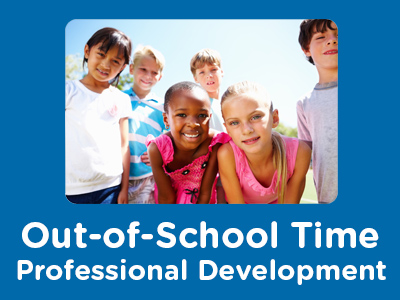 |
Helping Children with ADD Succeed In School-Age Programs: Strategies and Techniques for Staff |
1.00 |
Children with ADD regularly experience struggles and challenges at home, in school, and in the community. Without the help of knowledgeable, understanding, and supportive people, they often experience multiple failures and frustrations on a daily basis. In this course, we will examine strategies and techniques that staff can use when working with children with ADD. |
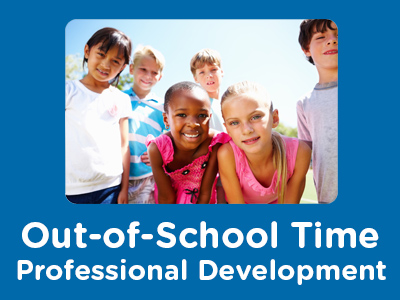 |
Helping Children with ADD Succeed In School-Age Programs: Characteristics and Needs of Children |
1.00 |
Children with ADD regularly experience struggles and challenges at home, in school, and in the community. Without the help of knowledgeable, understanding, and supportive people, they often experience multiple failures and frustrations on a daily basis. In this course, we will explore characteristics and needs of children with ADD. |
 |
Helping Children with ADD Succeed In School-Age Programs (Collection) |
2.00 |
Children with ADD regularly experience struggles and challenges at home, in school, and in the community. Without the help of knowledgeable, understanding, and supportive people, they often experience multiple failures and frustrations on a daily basis. Typically, they lack the self-confidence that stems from learning how to do things well. Their lack of social skills and self-control makes it hard for them to make friends with schoolmates and children they meet in program activities. By the school-age years, many of these children do not feel good about themselves. They feel lonely and ostracized. Their self-esteem sinks a little lower every day.
Staff in school-age programs are in a position to make a positive difference in the lives of children with ADD. Armed with important information and management tools, they can help reverse the cycle of failure and frustration that results in low self-esteem in these children. They can make life easier, happier, and more satisfying for children with ADD, their parents, other children in the program, and themselves.
IMPORTANT NOTE: ADD stands for Attention Deficit disorder. Many professionals refer to this disorder as ADHD, which stands for Attention Deficit Hyperactivity Disorder. Some professionals use these terms simultaneously or interchangeably. In this module, the term ADD is used to refer to the basic form of the disorder and recognizes that the basic pattern of inattention associated with ADD often includes the component of hyperactivity related to extremes in temperament. |
 |
Course 24: Helping Children with ADD Succeed in School-Age Programs |
2.00 |
Children with ADD regularly experience struggles and challenges at home, in school, and in the community. Without the help of knowledgeable, understanding, and supportive people, they often experience multiple failures and frustrations on a daily basis. Typically, they lack the self-confidence that stems from learning how to do things well. Their lack of social skills and self-control makes it hard for them to make friends with schoolmates and children they meet in program activities. By the school-age years, many of these children do not feel good about themselves. They feel lonely and ostracized. Their self-esteem sinks a little lower every day.
Staff in school-age programs are in a position to make a positive difference in the lives of children with ADD. Armed with important information and management tools, they can help reverse the cycle of failure and frustration that results in low self-esteem in these children. They can make life easier, happier, and more satisfying for children with ADD, their parents, other children in the program, and themselves.
IMPORTANT NOTE: ADD stands for Attention Deficit disorder. Many professionals refer to this disorder as ADHD, which stands for Attention Deficit Hyperactivity Disorder. Some professionals use these terms simultaneously or interchangeably. In this module, the term ADD is used to refer to the basic form of the disorder and recognizes that the basic pattern of inattention associated with ADD often includes the component of hyperactivity related to extremes in temperament.
|
 |
Helping Children with ADD Succeed in School-Age Programs |
2.00 |
Children with ADD regularly experience struggles and challenges at home, in school, and in the community. Without the help of knowledgeable, understanding, and supportive people, they often experience multiple failures and frustrations on a daily basis. Typically, they lack the self-confidence that stems from learning how to do things well. Their lack of social skills and self-control makes it hard for them to make friends with schoolmates and children they meet in program activities. By the school-age years, many of these children do not feel good about themselves. They feel lonely and ostracized. Their self-esteem sinks a little lower every day.
Staff in school-age programs are in a position to make a positive difference in the lives of children with ADD. Armed with important information and management tools, they can help reverse the cycle of failure and frustration that results in low self-esteem in these children. They can make life easier, happier, and more satisfying for children with ADD, their parents, other children in the program, and themselves.
IMPORTANT NOTE: ADD stands for Attention Deficit disorder. Many professionals refer to this disorder as ADHD, which stands for Attention Deficit Hyperactivity Disorder. Some professionals use these terms simultaneously or interchangeably. In this module, the term ADD is used to refer to the basic form of the disorder and recognizes that the basic pattern of inattention associated with ADD often includes the component of hyperactivity related to extremes in temperament. |
 |
Helping Students with ADD Succeed for Paraprofessionals |
1.50 |
Children with Attention Deficit Disorder (ADD) regularly experience struggles and challenges at home, in school, and in the community. Paraprofessionals are in a unique position to make a positive difference in the lives of students with ADD. Armed with important information and management tools, they can help reverse the cycle of failure and frustration that results in low self-esteem in these students. They can make life easier, happier, and more satisfying for students with ADD, their parents, other children in the class, and themselves. |
 |
Conducting Meetings: Communicating As Meeting Leaders (Instructor Guide) |
0.50 |
Clarity is crucial for conducting an efficient and productive meeting. By communicating clearly, you’ll be able to express ideas, overcome barriers to understanding, and specify expectations. Your ability to communicate clearly will facilitate interactions among participants, and minimize confusion and conflict.
In this course you will learn to: identify the ways to communicate clearly in a meeting, and identify communication styles to avoid, and the ways to enhance relationships with participants.
This Instructor's Edition of this course includes notes and suggestions to assist you in presenting the material, whether in an in-person classroom setting, or as an instructor-led online or distance-learning course. It also provides you with the answers to questions found in mid-lesson activities, as well as in the quiz that concludes the course. |


























